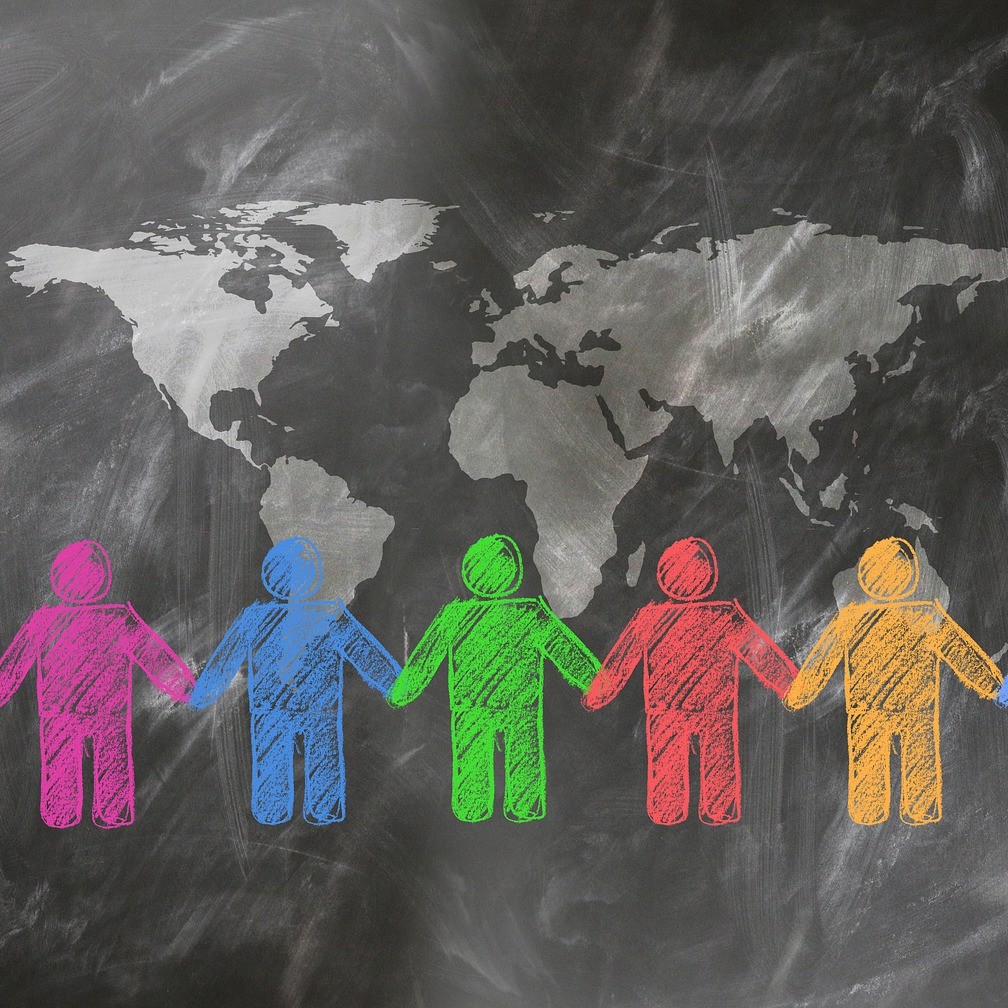Interactive graphics play a pivotal role in enhancing the user experience, capturing attention, and driving user engagement. Two powerful tools at the forefront of this digital revolution are WebGL (Web Graphics Library) and Animated SVG (Scalable Vector Graphics).
WebGL is a JavaScript API that facilitates the rendering of interactive 2D and 3D graphics within any compatible web browser, without the need for plugins. With its high-performance rendering capabilities, WebGL allows the creation of complex, realistic visual environments, making it an invaluable asset for applications requiring intricate 3D visualizations.
On the other hand, Animated SVG, a vector-based graphic format, enables the creation of animations and interactive graphics in 2D space. Its prime advantage lies in its scalability — SVGs maintain their high-quality appearance irrespective of screen size or resolution. This makes them ideal for responsive web designs, interactive diagrams, and animations that deliver a dynamic user experience without consuming excessive computational resources.
The power of custom animations lies in their ability to breathe life into a static webpage, creating a sense of immersion that text and images alone can't achieve. They can guide the user's attention, provide intuitive interactions, and significantly increase user engagement.
A well-crafted, engaging website with custom animations not only boosts user interaction but can also drive sales, as customers appreciate and are attracted to visually appealing, interactive, and easy-to-use interfaces.
Overview of WebGL and Animated SVG
 WebGL (Web Graphics Library)
WebGL (Web Graphics Library)
WebGL is a robust JavaScript API that delivers interactive 2D and 3D graphics straight to the web browser, bypassing the need for any additional plug-ins. Its ability to tap into a device's GPU (Graphics Processing Unit) for superior computational power makes WebGL an essential tool for high-quality, real-time graphics rendering.
WebGL comes into play when you want to create an immersive and interactive graphical experience, such as online games, data visualization, and virtual reality experiences within a web browser. Its compatibility with most modern browsers and its capacity for high-performance rendering makes it ideal for these computationally heavy tasks.
For businesses, WebGL offers a gamut of benefits. Firstly, it facilitates the creation of an engaging and interactive user interface, which is a critical factor in user retention and engagement. Additionally, it allows for visually stunning presentations of products or services, creating a more immersive shopping experience that can drive sales. A virtual 3D product view, for example, can provide customers with a more comprehensive understanding of a product, enhancing their confidence in purchasing decisions.
An excellent example of WebGL in action is Google Maps. The 3D views and interactive exploration are powered by WebGL, providing a seamless, high-performance user experience.
 SVG (Scalable Vector Graphics)
SVG (Scalable Vector Graphics)
SVG is a vector-based graphic format, meaning it uses mathematical equations to draw out your images. This allows SVGs to scale infinitely without losing any quality or clarity, making them perfect for responsive designs where device screen sizes may vary.
You should consider using SVGs whenever you require interactive 2D graphics, such as logos, infographics, or animations. SVGs shine in their simplicity, scalability, and versatility. They can be easily manipulated using CSS or JavaScript to create interactive experiences or animations.
Businesses can benefit from SVGs in numerous ways. Their scalability ensures your graphics always look crisp and clear, no matter the screen size. The interactive potential of an Animated SVG allows businesses to create engaging interfaces and visualizations. They can be used to make interactive charts, infographics, or even animations, adding to the visual appeal and usability of your website.
A common use of SVG is in the implementation of logos and icons that need to retain their clarity and quality at various sizes.
Another notable implementation is interactive data visualizations, where SVGs enable user engagement with the data in a visually intuitive way. For instance, the New York Times uses SVG for many of their interactive data visualizations in their online articles.
Comparison of WebGL and Animated SVG
WebGL and SVG serve different purposes and perform optimally in distinct scenarios. While both are used for creating interactive graphics, they vary in complexity, performance, and application.
WebGL, with its ability to create complex 3D graphics, excels in rendering intricate visual environments. WebGL is ideal for high-performance applications, such as online gaming or 3D product visualization, as it uses hardware acceleration for rendering graphics.
On the other hand, SVG is more suitable for simpler 2D graphics. It shines when used for creating interactive charts, diagrams, and simpler animations. An animated SVG are scalable, resolution-independent, and easier to implement, making them a great choice for responsive designs.
The choice between WebGL and SVG often comes down to the specific needs of your project.
For example, if you're designing a website that needs an immersive 3D product showcase, WebGL would be the ideal choice. Conversely, if your project requires an interactive infographic or a logo that maintains clarity at any size, SVG would be more suitable.
Interestingly, WebGL and SVG are not mutually exclusive and can be used together on the same website for different purposes. For instance, you could use WebGL for a high-quality 3D product view while using SVGs for interactive icons, diagrams, or animations.
How Custom Animations Drive User Engagement and Sales
Interactive graphics have become an essential element in engaging users and driving sales. These dynamic elements can guide user attention, facilitate understanding, and encourage interaction, leading to higher engagement levels.
Custom animations can enhance the user experience by making your website more appealing and intuitive. A user is more likely to stay on and return to a website that is visually pleasing and easy to navigate. This improved user experience can result in higher traffic, longer dwell time, and a lower bounce rate, all of which contribute to better SEO performance and higher visibility in search engine results.
Moreover, engaging animations can also help to boost sales. For example, an e-commerce website might use custom animations to showcase products, providing customers with a dynamic view of what they're buying. This enhanced shopping experience can build customer trust and increase conversion rates.
79% of marketers surveyed by the Content Marketing Institute (CMI) stated that interactive content improves messaging retention. The survey also shows that interactive content delivers 52.6% more engagement, reinforcing that people are really keen on this format. (Source)
Leveraging WebGL and Animated SVG
Choosing between WebGL, SVG, or opting to use both depends on your specific business needs and the user experience you aim to deliver.
If your business operates in a space that relies on visually-intensive applications, like gaming, e-commerce, or real estate, the use of WebGL for creating 3D graphics can enhance the user experience immensely. It's ideal for complex animations, interactive 3D product showcases, or immersive environments.
On the other hand, animated SVG is the right choice for 2D graphic applications. If your business requires high-quality logos, icons, infographics, or simpler animations that need to scale well across all devices, SVG will be your best bet.
In many cases, using both WebGL and SVG can provide a comprehensive user experience. For instance, WebGL can be used for a 3D product view, while SVG animations can add interactivity to the interface or visualizations in your webpage.
Implementation considerations include technical expertise, computational resources, and the potential impact on website performance. WebGL, while powerful, requires more advanced knowledge to implement and can be more resource-intensive. SVG, on the other hand, is generally simpler to use and requires fewer resources, making it a good option for more straightforward graphical applications. It's crucial to balance the desire for advanced graphics with the performance and responsiveness of your website.
The return on investment for implementing WebGL and SVG can be substantial. Enhanced interactivity and user engagement can lead to increased time spent on your website, improved conversion rates, and ultimately, higher sales. The engaging and immersive experience delivered by these tools can also lead to improved customer satisfaction, strengthening your brand and encouraging repeat visits and customer loyalty.
Whether you choose WebGL, SVG, or both, the key lies in using these tools to create a website that is visually appealing, intuitive, and offers a user experience that aligns with your customers' expectations and your business goals.
Both WebGL, with its prowess in creating complex 3D environments, and SVG, known for its scalable and simple 2D animations, offer unique ways to enhance user experience, drive engagement, and boost sales.




